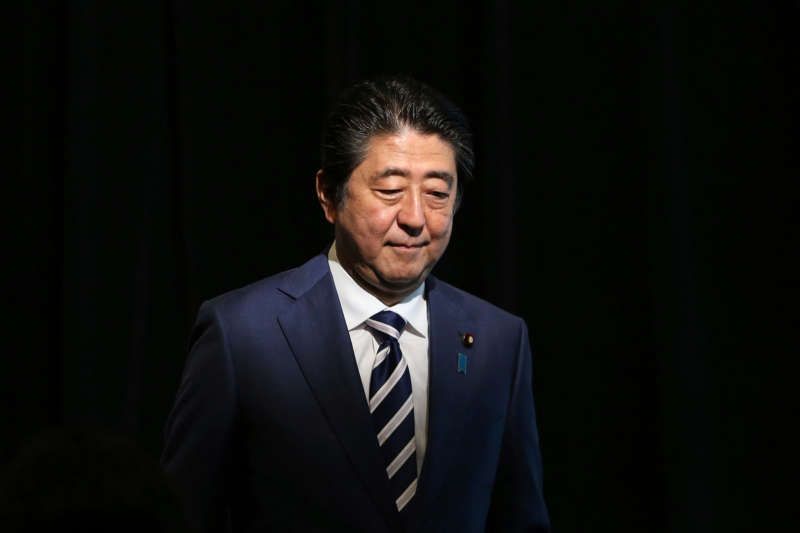
Call them populist or anti-establishment. Some, like Donald Trump, Marine Le Pen or Narendra Modi, are from the right. Others — Bernie Sanders, Alexis Tsipras, Jeremy Corbyn, Pablo Iglesias — are from the left. But in established democracies throughout the world, politicians are rising to power by tapping into the people’s disenchantment with the elite.
Not in Japan. Prime Minister Shinzo Abe is as establishment as they come: His father served as foreign minister, and his grandfather and great uncle were prime ministers. Yet his approval rating has consistently exceeded 50 percent, which is extraordinary by Japanese standards, and he has no serious challengers.
Why is public confidence in the political mainstream eroding in the West and elsewhere, but not here?
One reason is that Japan’s limited experience with what might be called left-wing populism was a decisive failure. The landmark election of the Democratic Party of Japan in 2009 represented a mass protest against the conservative Liberal Democratic Party’s almost uninterrupted half-century in power and the entrenchment of the bureaucracy during that time. But the D.P.J.’s crowd-pleasing proposals — more social security spending, a new child allowance — were wildly unrealistic. The party also failed to make good on its promise to move a major U.S. Marine Corps base out of Okinawa, disappointing the public while irking the United States government. The L.D.P. handily won the 2012 general election partly on the back of those failures.
When Mr. Abe became prime minister again that year — he already had been in 2006-7 — he seemed to bear a tincture of right-wing populism. Such sentiments had been gaining ground in recent years. The organization Zaitokukai, which opposes granting rights to Korean immigrants, was founded in 2006. Catering to hyper-nationalists, Shintaro Ishihara, the firebrand governor of Tokyo prefecture from 1999 to 2012, tried to buy the Senkaku Islands, which China calls the Diaoyu and also claims as its own.
But Mr. Abe has managed to obviate the appeal of such fringe positions. He has unified the country simply by promoting patriotic symbolism while protecting the welfare state. In foreign affairs, he cultivates an air of nationalism, but in fact exercises a form of realist pragmatism. For example, he visited Pearl Harbor with President Obama last year, and he signed a historic 2015 agreement with South Korea to compensate women who were sexually exploited by Japanese troops in the 1930s and 1940s.
In addition to Mr. Abe’s instrumentalism, three structural factors have buffered Japan from a wave of angry populism.
The main demographic of disenchanted voters who supported Brexit in Britain and the election of Donald Trump in the United States are relatively uneducated people, middle-age or older, who live in rural areas. In Japan, that is the group that commands the most political power: The electoral system is weighted in such a way that one rural vote typically counts for more than two urban votes. Here, the frustrated have an outlet for their demands in the political center itself.
After the collapse of Lehman Brothers in 2008, deflation hit the United States and Europe hard, causing acute economic and social dislocation. But Japan’s own bubble had collapsed back in the early 1990s, and the country then experienced prolonged economic stagnation — its so-called “lost decades” — without experiencing any major social upheaval. The Japanese government basically bought itself political stability: The social security budget has nearly doubled since 1990.
Japan has also kept globalization at bay in some important respects, notably immigration. In 2015, the government granted refugee status to all of 27 people. That year, only 1.5 percent of the Japanese population was foreign-born, compared with 3.4 percent in South Korea and 13.3 percent in the United States. There hasn’t been a strong backlash against globalization in Japan because Japan has managed to ward off some of globalization’s downsides.
That said, what has saved Japan from sweeping and virulent populism so far may well threaten its stability in the long term. The lopsided voting system creates serious political inequality between rural and urban voters, which itself creates inequality between generations. (The system is so skewed, in fact, that the Supreme Court has said that several elections in recent years were “in a state of unconstitutionality.”) Public debt keeps ballooning to fund social security, and that’s unsustainable. A society this closed to overseas talent is short on diversity and novel ideas, both drivers of performance and innovation.
And then there is Mr. Abe himself. When he returned to power in 2012, Japan had had 14 prime ministers in 20 years. But now the great stabilizer might be setting up the country for instability down the road. Mr. Abe has not groomed a viable successor, and no natural rival has emerged within his party or in the opposition. Japanese politics has become unipolar, and overdependence of this kind has a tendency eventually to unravel in ugly ways.
Yoichi Funabashi is chairman of the Rebuild Japan Initiative Foundation, a think tank in Tokyo.
